Previous Biopsies on this Patient:
NONE
TPIS Related Resources:
Knodell Scoring
Liver Transplant Topics
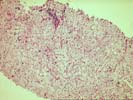
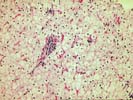
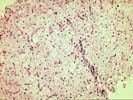
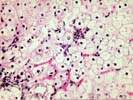
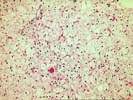
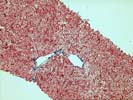
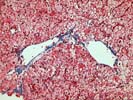
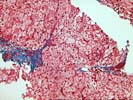
The liver biopsy shows apparent normal architectural arrangement but there is diffuse liver cell swelling in a cobblestone-like arrangement. The hepatocytes demonstrate lucent cytoplasm with various cytologic features. In many of these cells a vague microvesicular appearance is noted, suggesting the presence of microvesicular steatosis. In addition many hepatocytes contain cytoplasmic globules suggesting protein accumulation bodies although some of these might represent megamitochondria as well. Still other hepatocytes contain well defined vacuoles with slightly refractile material. No confluent necrosis is seen but there are scattered foci of neutrophil accumulation associated with individual cell loss. Glycogenated nuclei are prominent in the background and there is minimal associated inflammation of the portal tracts.
The exact nature of the alterations in the hepatocytes is not clear but overall the features suggest some sublethal metabolic derangement leading to accumulation of protein, fat and other endogenous substances. The appearances do not suggest a congenital metabolic derangement but given the patient's history instead point to a drug induced injury. We are unable to find reports of hepatic injury due to the experimental agent the patient is apparently taking, Amylin, nor with its analog Pramlintide. If further characterization of the injury is necessary, electron microscopy could be performed on the block and we will wait to hear further from you about this possibility. Thank you for sending this amazing case and we appreciate any follow-up information you receive.